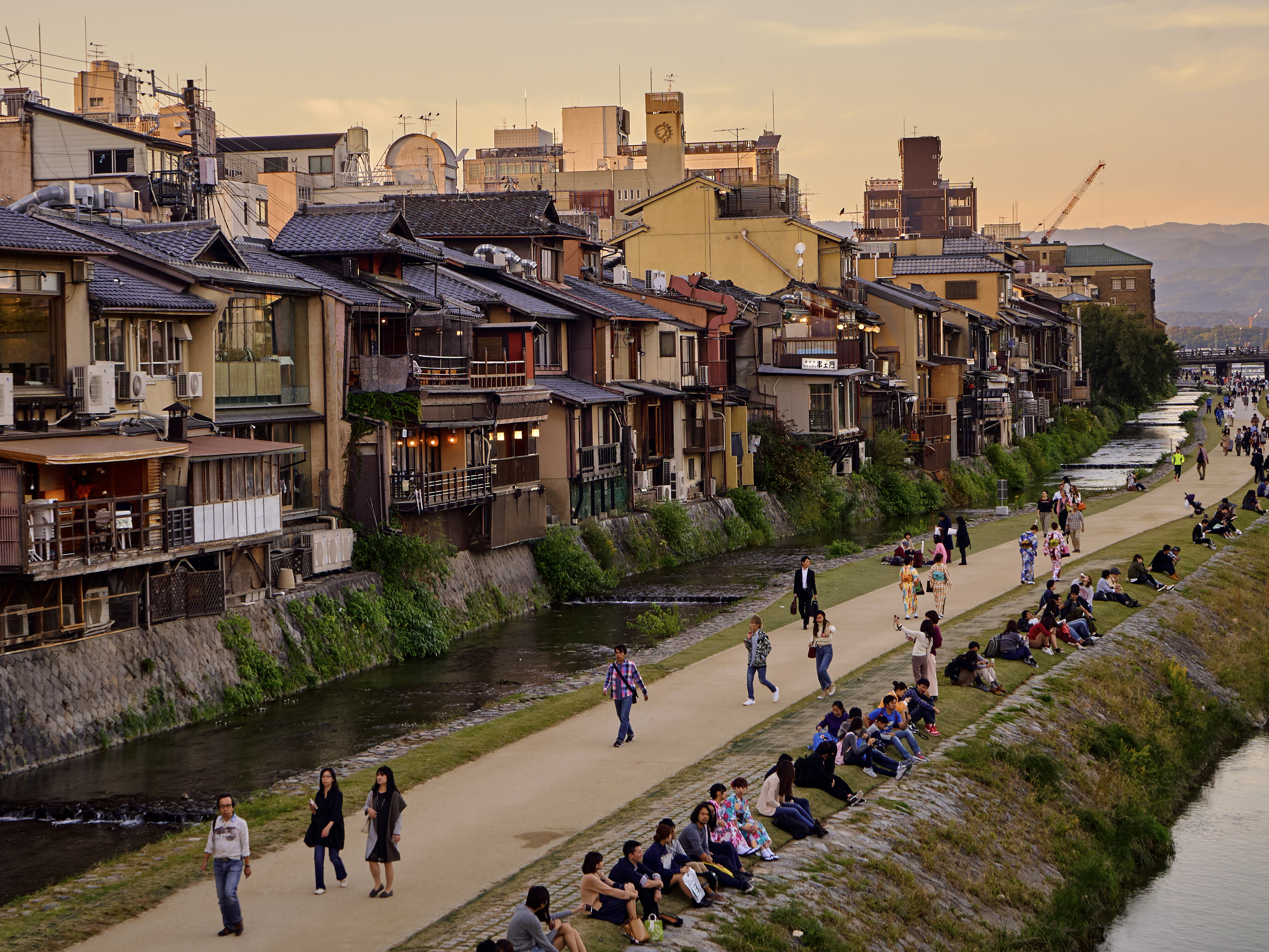Sites and Host Universities
ロサンゼルス • 京都 • 東京 • 長崎 • ロサンゼルス • 京都 • 東京 • 長崎 • ロサンゼルス • 京都 • 東京 • 長崎 • ロサンゼルス • 京都 • 東京 • 長崎 • ロサンゼルス • 京都 • 東京 • 長崎 • ロサンゼルス • 京都 • 東京 • 長崎 •
Los Angeles
July 29 - Aug. 1
Kyoto
Aug. 2-11
Kyoto, a city rich with culture. Nearly a thousand years since its emergence as the Heian capital in 794, Kyoto has continued to be the center of Japan. Surrounded by bountiful nature, Kyoto has produced countless hallmarks of Japanese culture. Take for example Kiyomizu Shrine and Byōdō-in Temple, the Nishijin textiles, maiko entertainers, or stories like The Tale of Genji and Pillow Book; Kyoto is home to a plethora of historical sites, works, and traditions. It is also home to the most long-established companies in Japan, and businesses such as Nintendo and Kyocera—considered pioneers of their times—are attracting attention as well. As such, at this site, we will discuss beauty, tradition, business, and globalization all centered on culture. As the first site of this conference, we hope that delegates will attempt to connect their sense of incongruity with respect to the values that can arise from cultural differences, how to relate to the opinions of others, and how differences in discussion styles, etc., to further learning. We would also like to consider the significance and future prospects for the arts and tourism, which are facing a difficult situation due to the COVID-19 pandemic.



Nagasaki
Located at the westernmost point of the Japanese mainland and in close proximity to continental Asia, since ancient times Nagasaki has functioned as the “window of Japan”, developing deep connections with foreign cultures. Remnants of this older history —whether regarding trade with European nations or the introduction and persecution of Christianity in Japan— can be felt and still color the city in the current day. Nagasaki also provides important insight into modern-era history with its role in Meiji-era industrialization and experience of atomic bombing. Additionally, with its mountainous and seaside geography and many islands, Nagasaki boasts a rich natural environment which on one hand supports industries like geothermal energy, forestry, and fishery, while on the other bringing about catastrophe in the form of natural disasters like the eruption of Mount Unzen-fugen. As the midpoint and second site of our conference, delegates will be able to appreciate the charm of Nagasaki as a regional site and engage in deepening discussions around a diverse set of topics such as natural environment, history and culture, or peace and national security.
Located at the westernmost point of the Japanese mainland and in close proximity to continental Asia, since ancient times Nagasaki has functioned as the “window of Japan”, developing deep connections with foreign cultures. Remnants of this older history —whether regarding trade with European nations or the introduction and persecution of Christianity in Japan— can be felt and still color the city in the current day. Nagasaki also provides important insight into modern-era history with its role in Meiji-era industrialization and experience of atomic bombing. Additionally, with its mountainous and seaside geography and many islands, Nagasaki boasts a rich natural environment which on one hand supports industries like geothermal energy, forestry, and fishery, while on the other bringing about catastrophe in the form of natural disasters like the eruption of Mount Unzen-fugen. As the midpoint and second site of our conference, delegates will be able to appreciate the charm of Nagasaki as a regional site and engage in deepening discussions around a diverse set of topics such as natural environment, history and culture, or peace and national security.
Aug. 12-18
![]()
![]()
![]()
![]()



Tokyo
Home to arguably the largest urban population in the world, Tokyo is a city that never sleeps, being the vanguard of Japanese society in many regards. Nagatachō, the heart of Japanese politics where central institutions like the National Diet Building and Prime Minister’s Office are located; Marunouchi, a financial hub where the major corporate players that drive the Japanese economy are lined up in office complexes; Shibuya, a fermenting ground for avante-garde and innovative ideas in pop-culture and fashion; Asakusa, where centuries worth of traditional culture and crafts have survived, passed down since the Edo Period; Tokyo’s appeal and influence is wide-reaching. Tokyo’s well-maintained world-class public transportation system that allows easy and safe access to these diverse locations is also another strength of the city. As our last site ,Tokyo will allow delegates of the 75th Japan-America Student Conference to heighten their creativity in these unique spaces while offering time for them to consolidate what they have gained from their experiences and reflect on their return to daily life.
Home to arguably the largest urban population in the world, Tokyo is a city that never sleeps, being the vanguard of Japanese society in many regards. Nagatachō, the heart of Japanese politics where central institutions like the National Diet Building and Prime Minister’s Office are located; Marunouchi, a financial hub where the major corporate players that drive the Japanese economy are lined up in office complexes; Shibuya, a fermenting ground for avante-garde and innovative ideas in pop-culture and fashion; Asakusa, where centuries worth of traditional culture and crafts have survived, passed down since the Edo Period; Tokyo’s appeal and influence is wide-reaching. Tokyo’s well-maintained world-class public transportation system that allows easy and safe access to these diverse locations is also another strength of the city. As our last site ,Tokyo will allow delegates of the 75th Japan-America Student Conference to heighten their creativity in these unique spaces while offering time for them to consolidate what they have gained from their experiences and reflect on their return to daily life.
Aug. 18-26
![]()
![]()
![]()







